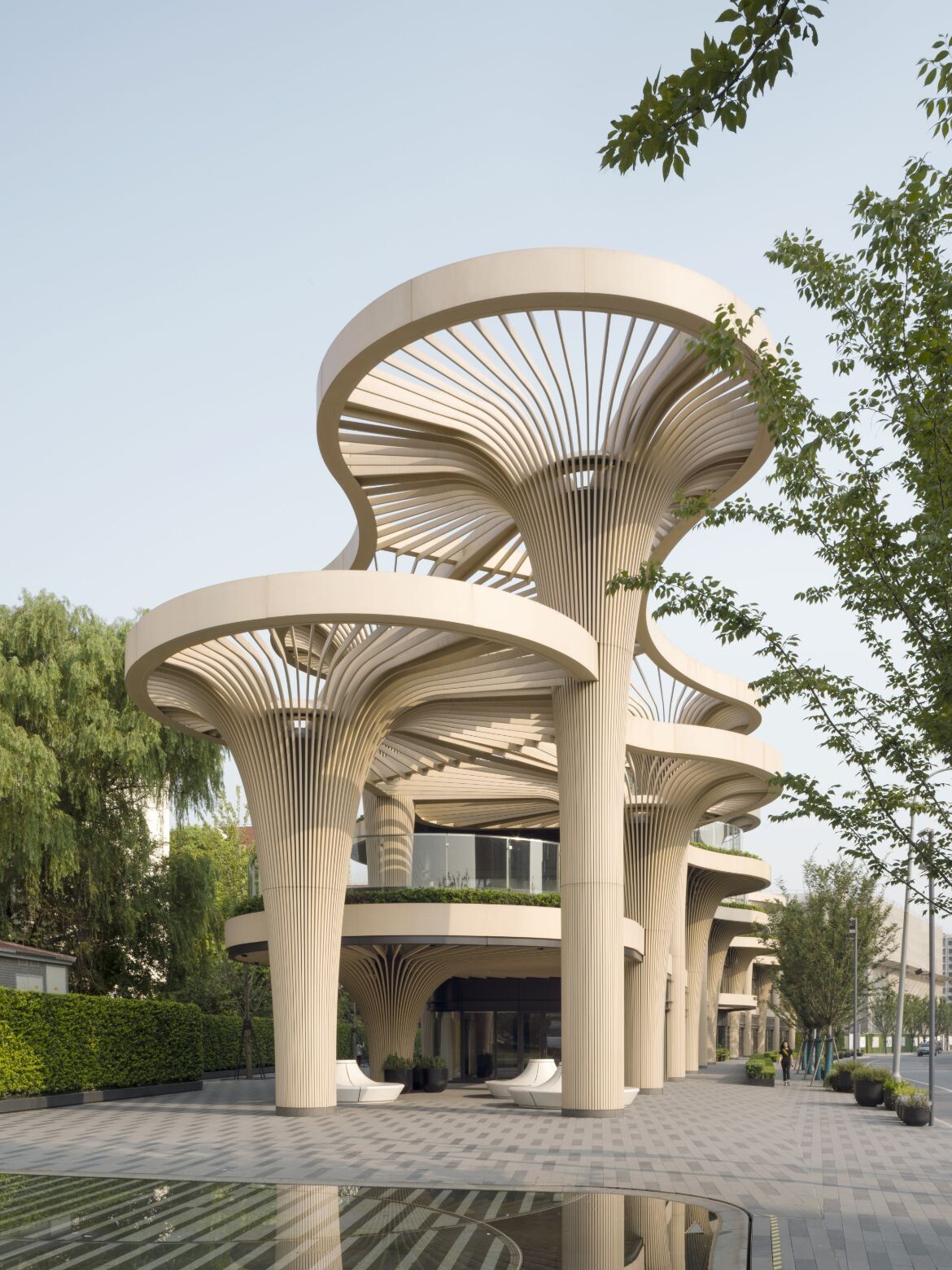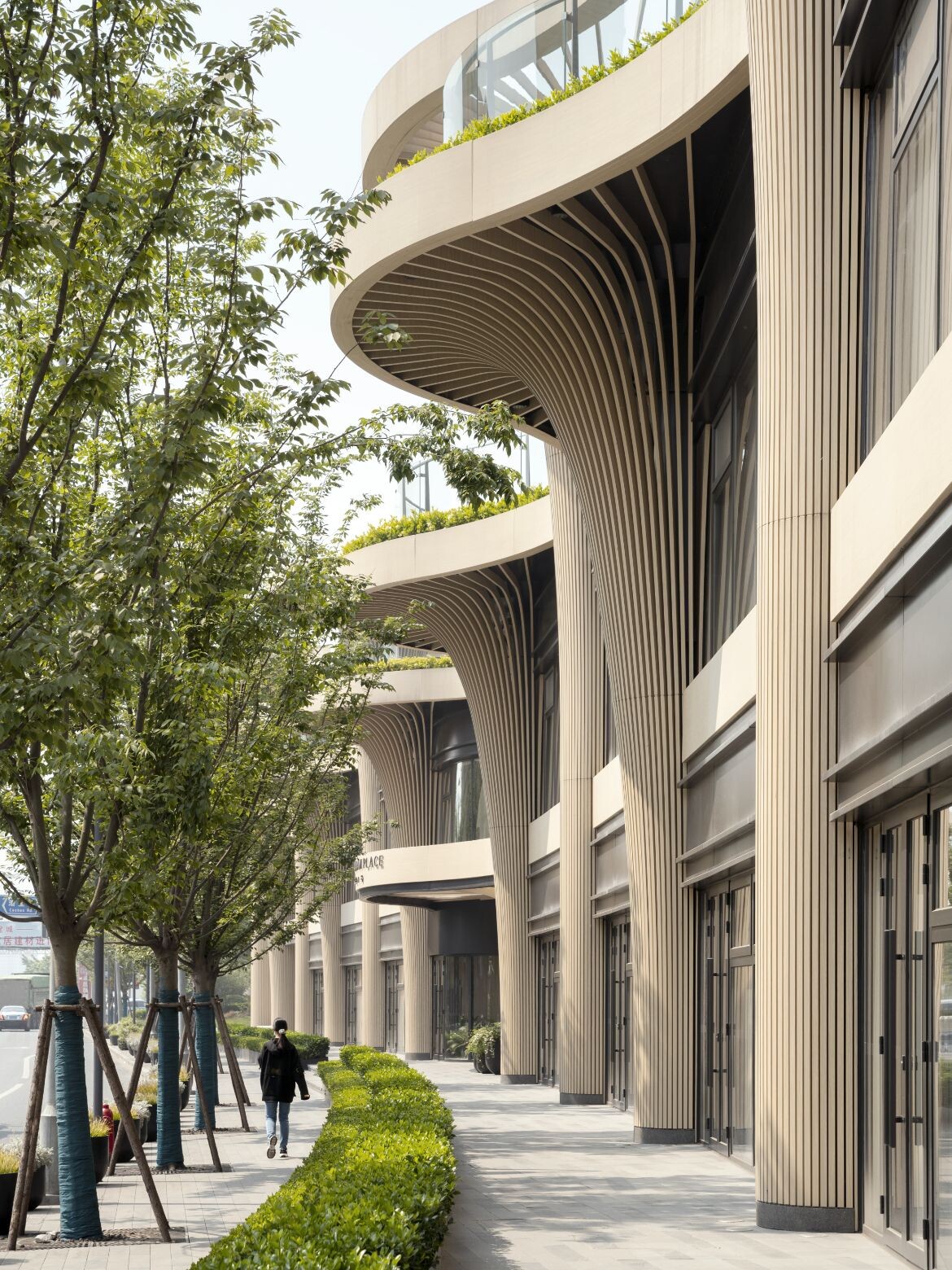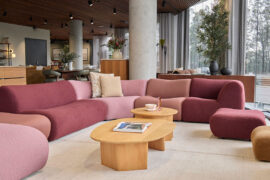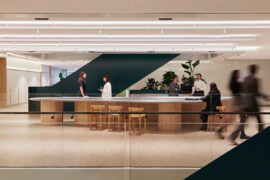As LANDMARK by Lexus returns for its sixth iteration, Sydney-based Japanese architect Koichi Takada is reflecting on the place of nature in design.

November 8th, 2023
‘Close to the Source’ – that’s the theme for the 2023 version of LANDMARK by Lexus, and it’s one which resonates for Koichi Takada. The architect’s relationship with Lexus is already longstanding but, speaking to Takada recently, it seems like there is an especially strong connection this year.
“We see a great synergy between Lexus and Koichi Takada Architects, and wanted our architectural contribution to reflect that,” he says. “In 2023 we are re-evaluating the meaning of luxury. LANDMARK by Lexus is part of that questioning for us and it needs to inspire people to discuss the relationship between ourselves and nature. I believe nature holds the answers, and architecture can start the conversation.”

LANDMARK by Lexus is a pavilion that takes its place again at the Melbourne Cup Carnival. Showcasing, and informed by, the traditional Japanese omotenashi hospitality, the sophisticated pavilion pays homage to takumi craftsmanship, or Japanese artisanal practice.
Takada explains more about the approach to greenery in the design: “The theme ‘Close to the Source’ is powerful. We specified Australian native plants, locally sourced. We see this as an opportunity to talk about the wisdom held by our First Nations people – who have always lived at one with nature, and who understand the delicate balance to be maintained.”

The emphasis on green aspects of design and thinking about future sustainability comes on the back of a distinguished and varied career for Takada. Originally from Tokyo, he studied in London and New York before moving to Australia. Here, in Sydney, he decided that it was the place to stay. Reflecting on his childhood in Japan, Takada talks about how nature has since been taken away as the city has grown exponentially.
“I decided that if I were to be an architect, I would really need to question the built environment,” says Takada. “The relationship between city and nature becomes very important, and it’s only when I came to Sydney that I thought I really wanted to live there. The weather, the people, the food – and just abundant nature. It felt like nature and the city in balance.”
Related: Hiroshi Nakamura in profile

The sentiment points to some of the strengths of the Australian city, despite problems of sprawl, low density and affordability. Sydney is arguably large enough to get the benefits that come with the big city, but small enough to avoid some of the pitfalls.
Takada, however, worries that the balance between city and nature is being lost here too: “Now we’re trying to restore that [balance] by reintroducing green in place of grey.

My architecture combines a Japanese sense of restraint from my upbringing with unpredictability inspired by nature. I think that tension is an important part of my creative process – and something I enjoy exploring in my collaboration with Lexus.”
The new pavilion takes a nature-led approach with its softened, impermanent, modular structure. Its façade features mass greening while the landscaping as a whole focuses on edible Australian natives.
“At its heart, my architecture is designed for people to reconnect with nature,” says Takada. “When you design with people front of mind – I call it humanising architecture – people respond positively to the outcome. I suppose that would be why my work resonates.

“With LANDMARK by Lexus, we want guests to feel the benefits of being immersed in nature – even though it’s a very man-made and artificial environment. We want guests to interact with the green façade – pluck from the native pepper, saltbush or lemon myrtle and activate the senses.
“We believe together we can restore balance and turn back the negative effects we’ve had on our planet – they are driven by greed, convenience and a lack of consideration for the limitations of the earth’s resources. It is something that I am very passionate about – and it aligns with the creative concept this year to reflect the challenges of our times.”
Koichi Takada Architects
koichitakada.com
Photography
Sharyn Cairns unless credited separately




We think you might also like to read about Koichi Takada’s piece on the carbon consequences of design.
INDESIGN is on instagram
Follow @indesignlive
A searchable and comprehensive guide for specifying leading products and their suppliers
Keep up to date with the latest and greatest from our industry BFF's!

London-based design duo Raw Edges have joined forces with Established & Sons and Tongue & Groove to introduce Wall to Wall – a hand-stained, “living collection” that transforms parquet flooring into a canvas of colour, pattern, and possibility.

Poised at the intersection of design and service, King Trade has launched a new dedicated hub in Bondi Junction, which offers tailored product, service and pricing for architects and interior designers.

‘The Mandate Mirage: 2025 Workplace Futures Survey’ is a new report by international design practice Hassell, revealing that the real drawcard for attracting employees to the office in-person is choice.
The internet never sleeps! Here's the stuff you might have missed

Law is one of the oldest professions in the world but Architectus’ new design for Ashurst Sydney’s workplace at 39 Martin Place reflects and responds to contemporary shifts.

At the NGV’s Making Good: Redesigning the Everyday, design becomes a force for repair. From algae-based vinyl to mycelium earplugs, the exhibition proves that rethinking the ordinary can reshape our collective future.